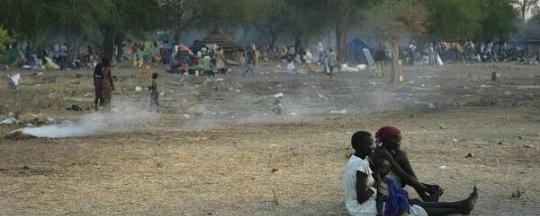The United Nations and the South Sudanese Relief and Rehabilitation Commission (RRC) have made conflicting estimates as to the number of displaced people in Lakes States. Their estimates differ by nearly 50,000.
All of the people encamped along the west bank Nile in Lakes State are ethnic Dinka who fled violence in neighbouring Jonglei when SPLA defectors and allied militia took over the Bor area. Often they came with few possessions, having fled their homes in a great hurry.
Recent UN estimates put the number of displaced people in Lakes State at 91,708, of which 84,226 are in Awerial County neighbouring Jonglei. According to the RRC, however, the number in Awerial is far higher.
“We have in Awerial County 132,297 people. They come from Bor and Twic East and Duk, three counties of Jonglei. The government has started to help the people in Awerial area, brought food and services, and needed humanitarian things,” said Jonglei RRC Director Gabriel Deng Ajak on Wednesday.
Clement Taban Dominic, Undersecretary of Humanitarian Affairs, likewise put the number in Minkamen at 132,000. He said this in an interview with Radio Tamazuj also on Wednesday.
The largest population of displaced is at Minkamen, accommodating 74,051 people scattered out along 5 kilometres or more of riverbank. Groups of 2,865 and 5,481 respectively are farther inland to the west at the villages Wunthou and Kalthok, and 1,829 at Guot-thom.
Aid agencies have not yet completed registration of the displaced population in Minkamen, so it is not clear how exactly the UN arrived at their estimate. In part, they may have relied on earlier RRC figures, which have now been revised.
Notably, yet more people in unconfirmed number are still also stranded on the east bank of the Nile. There are people who may not be able to afford the price of the fare of 80-100 SSP to cross the river by boat, and there are others who are heavily pregnant women who fear making the journey in their condition.
Services such as water, health and food distribution are being scaled up by national and international organizations on the west bank, many working out of the RRC compound in the area.
“The government, organizations and people with a heart to help have assisted. ICRC, WFP, and Oxfam have brought things here, also MSF working in water and health,” said the Jonglei RRC director.
File photo: Many people displaced from Bor County are scattered throughout eastern Lakes State, with the largest concentration of about 80,000 around Mingkamen (MSF)




